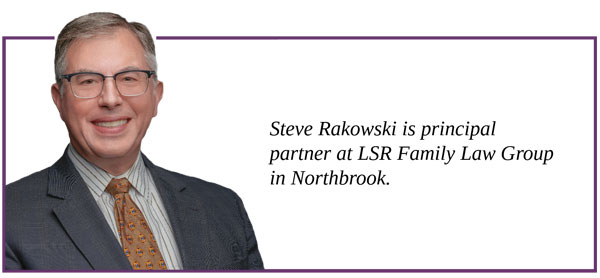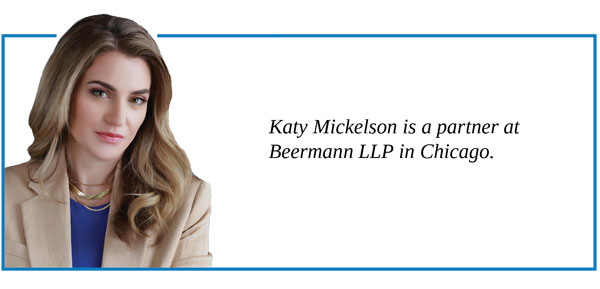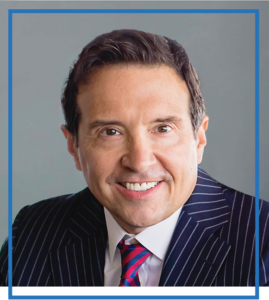An embryo custody case that even Solomon couldn't resolve
Illinois Fellow
American Academy of Matrimonial Lawyers
October 2022

Our society strongly encourages the rights of both parents in raising a child. But what happens when that child is only a gleam in a lab technician's eye?
This question rests at the center of the Second District Illinois Appellate Court decision In Re the Marriage of Eneya Katsap and Alexander Katsap, which was decided in August 2022. It's the first Illinois case in several years to deal with embryos, and it cries out for clarification from the Illinois legislature.
The Katsaps were a married couple living in Israel, where they created embryos using in vitro fertilization in 2013. When they subsequently moved to upstate New York, they placed the frozen embryos in storage at the New England Fertility Institute in Connecticut. In 2015, they filed a contract with the institute stating that, if the parents were to divorce, Eneya would gain custody of the embryos.
The Katsaps became parents to a child using one of the embryos and a surrogate birth mother. Eneya—who is medically unable to bring a child to term— had planned to have another child via surrogacy. But in April 2020, Eneya took their child and moved to Naperville, where her parents lived, and then to Buffalo Grove; she did not inform Alexander of either location.
The couple soon separated and Eneya claimed the remaining embryos under the contract filed with the fertility institute. But Alexander denied signing that contract and testified that in the event of separation or divorce, they actually had agreed to donate the embryos. And in what had become an acrimonious dispute, he definitely did not want them going to his ex-wife.
The original trial court in DuPage County sided with Alexander, granting him "exclusive possession and control of the embryos." The Second District Appellate Court said, "Not so fast," and cited precedents for three methods in which courts have dealt with cases involving frozen embryos:
- The court simply can enforce the original contract filed with the fertility institute, in this case giving the embryos to Eneya.
- The parties can mutually consent to scrap the earlier contract and maintain the status quo, in this case leaving the embryos in storage.
- The court, in the absence of an enforceable agreement, can use a balancing approach to weigh the separate parties' interest "in seeking or avoiding procreation."
In August 2022, the Appellate Court chose the third option, and applied a test to balance the rights and privileges of the former spouses. Relying on the only Illinois precedent for such a test, the Court gave the embryos to Eneya, deciding that her "interest in...procreation." This decision was colored by the fact that she cannot have children on her own (or even produce more eggs) and that the embryos represent her only chance at more offspring. In addition, these facts outweigh Alexander's interest in removing the embryos from her possession.
This raises a further question.
If the mother implants the embryo, is the sperm donor (Alexander) responsible for child support and other duties? Two Illinois statutes come into play here. The Appellate Court cited one of them, the Gestational Surrogacy Act, in concluding that the husband is not an “intended parent,” and thus not liable for support. As a gamete donor, however, he is indeed a parent under the Parentage Act, and thus liable for support—unless he reaches an agreement with Eneya relieving him of that responsibility.
Given the bitterness between these parties, such a compromise seems unlikely. And should Eneya herself decide to donate the embryos—and neglect to inform Alexander—how would he even learn if one of their children has been born?
A divorce already contains enough emotional issues; the presence of frozen embryos complicates things exponentially. The legislature must address the issues raised in this case via the Illinois Marriage and Dissolution of Marriage Act (IMDMA), as well as the Parentage and Surrogacy Acts. These are sturdy pieces of state law, in part because they remain flexible to amendment by the legislature. If nothing else, the details of the contract originally filed in Connecticut provide a cautionary tale for attorneys in Illinois and across the nation.
The Katsap case, now on its way to the Illinois Supreme Court, underscores the need for further clarification.
(The author has no involvement with the case described here.)

Reach him at glschles@aol.com and 847-680-4970.









 Why did you apply to become a Fellow of the AAML?
Why did you apply to become a Fellow of the AAML?











 What do you find most rewarding about being an AAML Fellow?
What do you find most rewarding about being an AAML Fellow?

 Why did you apply to become a Fellow of the AAML?
Why did you apply to become a Fellow of the AAML? Why did you apply to become a Fellow of the AAML?
Why did you apply to become a Fellow of the AAML? Why did you apply to become a Fellow of the AAML?
Why did you apply to become a Fellow of the AAML? What do you find rewarding about being a Fellow of the AAML?
What do you find rewarding about being a Fellow of the AAML? What area of family law do you find most interesting?
What area of family law do you find most interesting?
 What are you most looking forward to in the following year, personally and or professionally?
What are you most looking forward to in the following year, personally and or professionally? What do you find most rewarding about family law?
What do you find most rewarding about family law? What do you find rewarding about being a Fellow of the AAML?
What do you find rewarding about being a Fellow of the AAML? What do you find rewarding about being a Fellow of the AAML?
What do you find rewarding about being a Fellow of the AAML? Why did you apply to become a Fellow of the AAML?
Why did you apply to become a Fellow of the AAML?